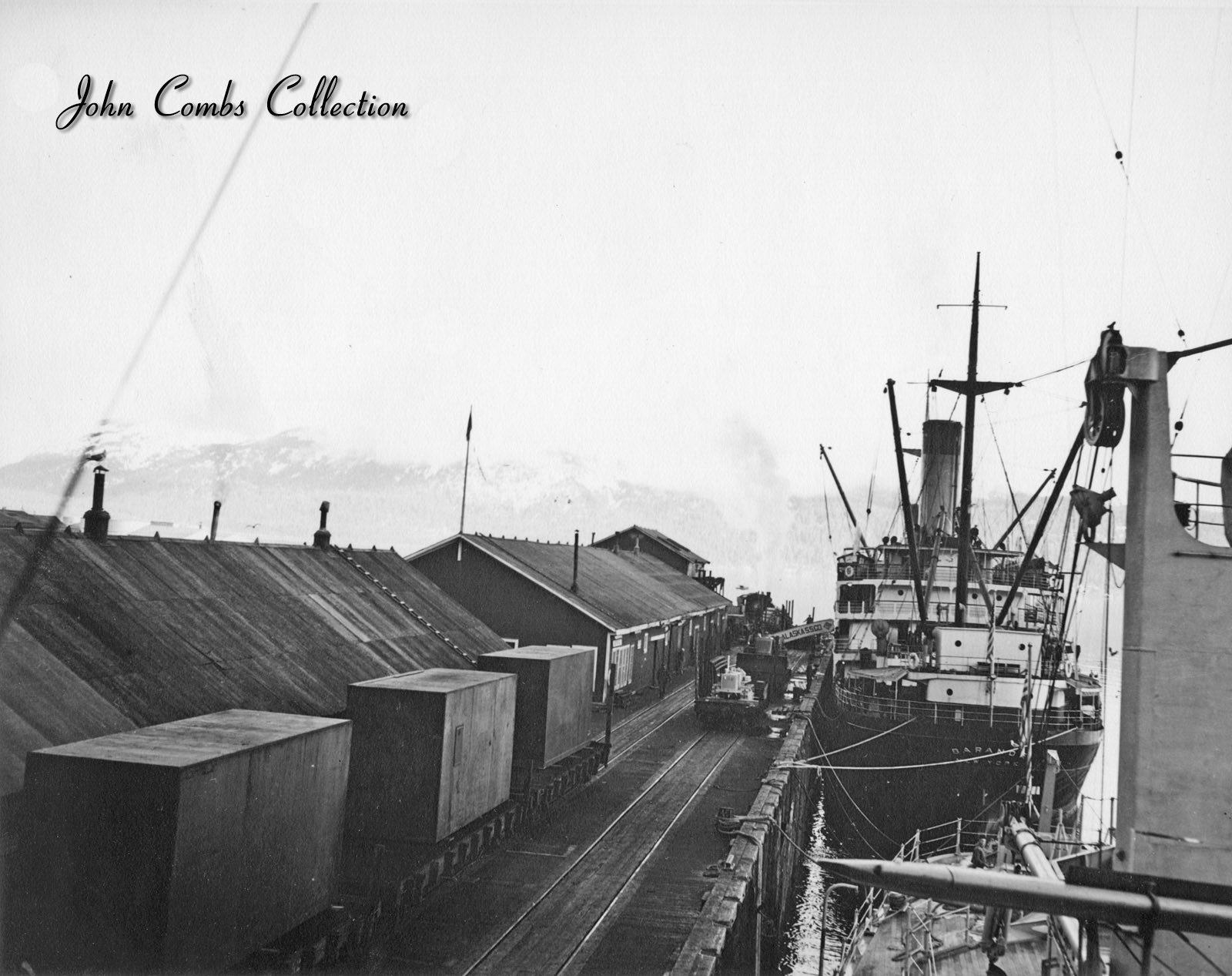This is Seward in late 40’s early 50’s. The name on the stern of the ship is strange, can not make it out as anything on the Alaska Steam Ship Co. roster but they are using the ASSCo gangway in the background. The containers look like the very first ones in service and were 8’X20’ The ARR had some of these. The flat car loads look like a little D-2 or 4 Cat and behind it a D-6 or similar with a blade. Just coming around the curve at the head of the dock is a mogul.
Funny how when you are looking for one thing you run into another. Well I saw that in your notes the name of the ship was strange. For a while I thought it was SS DARANDE. So I started looking for the ship. Well after glancing at the photo several times It hit me that the image quality distorted the letters and what this is a photo of is the SS BARANOF in Seward between 1946 and 1954 based on information below. http://www.theshipslist.com/ships/lines/alaska.shtml After the war, the Alaska shipping industry changed. Only two major companies, Alaska Steamship Company and Northland Transportation Company served Alaska, both owned by the Skinner and Eddy Corporation in Washington. Before the war, 42 ships served Alaska; in 1948 only seven. The change was due to the end of federal subsidies, rising labour costs, and new competition from truckers and air carriers. The Alaska Steamship Company started to use tugs and barges and container ships. Tugs and barges could travel faster and operated with smaller crews 5 to 7 workers as compared to 30 to 40 on freighters. Containers could be trucked, lifted on and off, and trucked away, allowing faster loading. The first passenger sailing out of Seattle was undertaken by ALASKA in January 1946. She was subsequently followed by the YUKON, ALEUTIAN, BARANOF and DENALI. Ports of call northbound were Ketchikan (two days), Juneau (three days) and Seward (five days), with occasional calls at Wrangell, Petersburg, Skagway, Sitka, Cordova, Valdez, Kodiak and Seldovia. Southbound, the steamers called at the same ports they stopped at heading north. All steamers had accommodation for over 200 passengers ranging from steerage to a deluxe cabin with private bath. It was during this period that the company decided to concentrate on tourism. The Inside Passage to Alaska was a hazardous journey and Alaska Steamship was no stranger to its perils. On 4 February 1946 at 4 am during a blinding snowstorm and strong north easterly winds the YUKON ran aground near Cape Fairfield. Heavy seas prevented the launching of boats until daylight, by which time rescue vessels arrived to take off the frightened passengers and crew. Some years later another calamity was the collision of BARANOF with the Greek steamer Triton on 26 July 1952 near Nanaimo with the loss of two of the crew of the latter. Many factors contributed to Alaska Steamship's eventual termination of passenger service. Firstly, there were continued labour problems caused by longshoremen, seamen and stewards. Secondly, the arrival of an air service (partly subsidized by the Government) to Alaska took away potential passengers and freight bookings and thirdly was the end of charter privileges and subsidy payments. The Alaska Steamship Company was facing insurmountable financial difficulties that even a new fleet of steamers could not remedy. On 6 July 1954 therefore Mr. D.E. Skinner the president of Alaska Steamship Company announced that his firm was moving out of the passenger business. The BARANOF was immediately laid up, the ALASKA sailed until August, the DENALI made the company’s last passenger sailing in September 1954, The ships were then sold off. |
